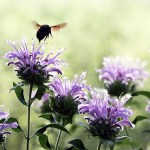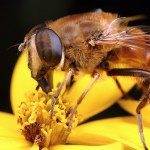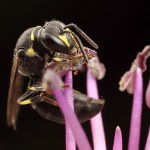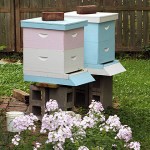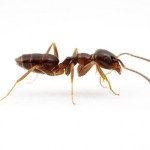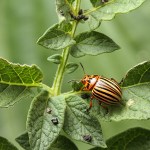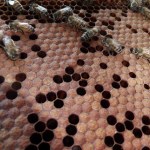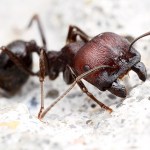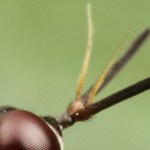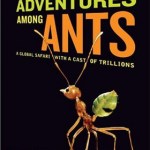
After some consideration, I have decided to move Myrmecos back to its original location:
http://myrmecos.net/
I apologize for making everyone change RSS feeds and bookmarks twice in recent months. What's worse, I can't promise that Myrmecos won't move again in the near future. Some intriguing offers have arrived in my inbox and I am thinking them over.
My sincere thanks to the various bloggers and support staff here at Scienceblogs for hosting me. I'd especially like to thank Erin Johnson, who brought me into the network and handled some of the difficult blog migration issues.
Don't read…
And while you're doing that, I have answered the Monday Mystery back at my tried and true wordpress blog.
I will be blogging at the old digs for the next few days until I have had time to digest the unfortunate recent events here at Scienceblogs. What's going on? I'll let my excellent sciblings explain:
GrrlScientist
Mark Chu-Carroll
Thoughtful Animal
PalMD
Dr. Free-Ride
***update and clarification*** I have reached no decision about the future location of Myrmecos blog.
I like some things about Scienceblogs. Their openness in letting bloggers air this sort of dirty laundry out in public…
Eristalis, the drone fly
Urbana, Illinois
Easily mistaken for a bee, Eristalis is in fact a clever mimic capable of luring many an unsuspecting observer into the land of amusing taxonomy fail.
But the structure of the antennae, the broad attachment of the abdomen to the thorax, and the presence of only a single pair of wings mark it as a fly.
I took this photo in bright sunlight, although it doesn't look that way from the black backdrop. This dramatic lighting effect is achieved by using such a small aperture (f/13) and a fast shutter speed (1/250 sec) that almost no ambient light reaches the…
I would like to point out that when an Australian says "pot plant", they mean house plant. We had some issues with this linguistic distinction when Mrs. Myrmecos first moved here from Melbourne and started telling everyone about the great pot plants we were growing on the porch.
I do congratulate the fine folks at Antweb, though, for having the emotional maturity to let the vocabulary slide and just answer the question.
Ok, bug experts. Who is this charming little insect?
Points will be awarded for the first correct guess: five for family and five for genus.
The cumulative points winner for the month of July will win either 1) any 8x10 print from my insect photo gallery, or 2) a guest blog post on the (safe-for-work) topic of their choosing.
Our garden bees, photographed yesterday evening:
As you may have noticed, in painting our hives we've eschewed the standard hive whitewash in favor of pleasing pastels.
But we've got nothing on the hive art produced by other beekeepers on the web. Below the fold is a selection of my favorites:
(source)
(source)
(source)
(source)
(source)
(source)
(source)
(source)
(source)
Tapinoma sessile
Ant ecologist extraordinaire Rob Dunn sends along the following request:
We are looking for live colonies of
Aphaenogaster rudis
Temnothorax curvispinosus or T. longispinosus
Crematogaster lineolata
Tapinoma sessile
from anywhere within their ranges. If you are potentially willing to contribute colonies we would be very grateful. Please contact Sarah Diamond (sediamon@unity.ncsu.edu) regarding details. If you are interested in more extensive collection of colonies, we may be able to reimburse your collection time. These collections will be used to try to understand…
Leptinotarsa decemlineataUrbana, Illinois
Meet the Colorado Potato Beetle.
If I had to make a list of ten insects all people should know, I'd probably put this one on it. Leptinotarsa decemlineata is a walking case study in evolutionary ecology.
Anyone with a potato patch will recognize this large, pin-striped beetle as a particularly voracious consumer of potato leaves. And that's true- the insect is a major agricultural pest. But it has only been eating potato plants for 150 years or so. Before that, L. decemlineata was an obscure insect found in the mountains of western North America…
Forensic entomologists, of course.
These are the strong-stomached folks who study the arthropod fauna that colonizes dead flesh. Their knowledge of insect taxonomy, ecology, and development can be used to provide estimates of the time and conditions of death. Or zombification, in the present case.
Hypothetically, suppose a zombie shuffles along to my house at horrifying rate of 1 km/hr.
On arrival, I note that the zombie is infested with final instar larvae of the blow fly Phormia regina. Under our current warm summer weather conditions, it takes at least 5 days for the maggots to reach that…
I woke up to the shocking discovery that I've been turned into some sort of Zombie:
The great thing is, I seem to attract more ants this way. With any luck I'll get silphids, too.
(artwork by Joseph Hewitt, creator of Gearhead)
Today's bug news carries sensational reports of a study claiming new evidence linking cell phone use and the dreaded Colony Collapse Disorder.
London, England (CNN) -- A new study has suggested that cell phone radiation may be contributing to declines in bee populations in some areas of the world. Bee populations dropped 17 percent in the UK last year, according to the British Bee Association, and nearly 30 percent in the United States says the U.S. Department of Agriculture.
This bit of silliness resurrects a fanciful hypothesis first raised when honey bees started disappearing a couple…
Loxocera cylindrica rust fly (Diptera: Psilidae)
Urbana, Illinois
The unmistakable antennae on these amorous insects mark them as psilid flies, and commentator Chris Grinter (of The Skeptical Moth) correctly surmised the species as Loxocera cylindrica. Nine points to Chris, and one to FormicidaeFantasy who was the first to pick the order.
This brings us to the end of June and to the announcement of the overall mystery points winner for the month:
Ted MacRae, of the excellent entomology blog Beetles in the Bush, has accumulated ten points and is entitled to either a guest blog post here on…
Messor decipiens,
South Africa
Here's a photo I took last week. It shows a granivorous ant with an enormous head housing muscles for milling the harvest. I used Canon's MP-E 65mm 1-5x lens and a twin flash diffused through two sheets of mylar.
The last time I photographed this species was in the field in South Africa, using a little Nikon coolpix digicam. That was in 2003:
While it's true that the greater magnification and sensor quality of the newer and pricier Canon gear make an obvious difference, I'd argue the single biggest advance is in the lighting. The Canon allows my to plug in an…
Ok. Now you guys have asked for it. Apparently the mysteries haven't been quite obscure enough.
So here you go. A real challenge:
One point for order, three points for family, three points for genus, and three for species. Points are awarded for the first correct guess in each category.
The cumulative points winner for the month of June will win either 1) any 8x10 print from my insect photo gallery, or 2) a guest blog post on the (safe-for-work) topic of their choosing.
My review of Mark Moffett's new ant book appears this morning in Myrmecological News:
Let me start with the obvious: Adventures among ants is the most visually stunning ant book ever published.
The physical product, from glossy paper to the tasteful font, is an aesthetic tour de force. The photographs are ... well, this is a Mark Moffett book, and unless you've been hiding under a rock for the past two decades - a reasonable place for a myrmecologist, I suppose - you'll know that Moffett is the National Geographic photographer responsible for much of that magazine's insect imagery from the…
A worker cradles a freshly-laid egg in the brood nest of a laboratory colony of the Argentine Ant Linepithema humile.
photo details: Canon EOS 7D camera
Canon MP-E 65mm 1-5x macro lens
ISO 100, f/13, 1/250sec
Lethocerus medius, Linoleum block print
by the Dragonfly Woman
I've been meaning to mention Dragonfly Woman's insect blog, and now I've got an excuse. Chris Goforth- the Dragonfly Woman- is an aquatic entomologist and a friend of mine from when I worked at the University of Arizona. Recently, she sent this lovely print of a giant water bug.
Chris's blog is a thoughtful repository of info on all things insect and water-dwelling. For instance, how to tell the difference between dragonflies and damselflies. And, insect metamorphosis.
And now, she also crafts insect art. Awesome.
What were those magical mystery circles cut into leaf margins, and who made them?
As so many of you recognized, they were the marks of leafcutter bees, furry little insects that use the leaves to make nests for their young.
For their correct answers, MrILoveTheAnts gets 5 points, and James Trager gets five points. And Tonya & Hp each get a point for making me laugh.
Have you wondered about the buzz in the air this week? Why the world seems to tingle with the excitement of little wings and millions of jointed legs?
No? Well, you're probably on the wrong drugs.
Anyway. This week is National Pollinator Week here in the U.S., where we take time to appreciate the fact that many plants wouldn't be able to have sex and set fruit if not for the multitudes of animals that visit their flowers.
I know. It's June 21-27- the week you've all been waiting for. The Moths! The Flies! The Bees! The Butterflies! Even the Bats, and the Birds!
Many local groups are…
